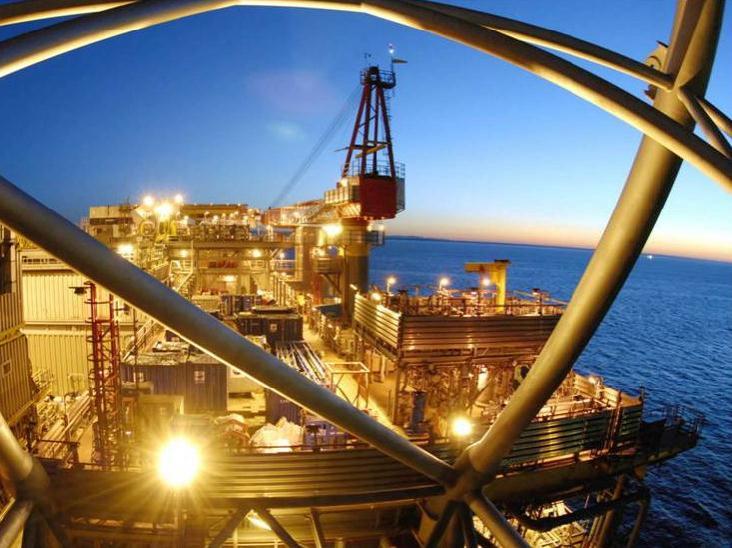
ASIA: SLOW CRUDE OIL OUTPUT

REUTERS. Oil producers from Africa to the Americas have a growing opportunity to supply crude to the Asia-Pacific, as the region's output stagnates and massive refining capacity comes online in China and India.
Asian refiners import - mostly from the Middle East - more than twice the volume of crude produced regionally, and have been taking more shipments from West Africa since 2009. The last two years they have also been buying more from Europe, Canada and South America whenever prices and shipping costs allow.
Now, with regional producers struggling to hold supply steady as mature fields decline, Kazakhstan, Nigeria and Mexico are looking to ship more crude to Asia as the U.S. shale oil boom slashes the need for imports there.
"U.S. imports are down and what they are not importing are mostly light sweets from Africa because crude produced in the U.S. is also light sweet," said Thailand-based independent oil analyst John Vautrain.
Asia will require an additional 300,000 barrels per day (bpd) of low-sulphur or sweet crudes in 2014 compared with last year, to meet demand from new refineries and for blending with cheaper, low quality oil, according to an oil company analyst.
The Asia-Pacific, which produces mainly sweet crudes, had been expecting a boost this year from higher output in Indonesia and Malaysia. But project delays in the Southeast Asian nations highlight challenges in meeting the broader region's growing demand, especially given a lack of big oil discoveries.
"It's an increasingly mature region particularly for oil," said Andrew Harwood, southeast Asia upstream analyst at Wood Mackenzie. "Going forward there's probably going to be fewer discoveries ... with a greater emphasis required on increasing recovery from existing projects."
Still, the volume of the additional imports depend not only on how fast regional oil demand grows versus flattening output growth, but also on how desperate suppliers from other regions become as export opportunities slump in other markets.
Asia-Pacific oil demand overall is forecast to grow 500,000 bpd, or 1.5 percent, to 30.6 million bpd this year, with China's oil use rising 3.4 percent and India's 2.4 percent, according to the International Energy Agency.
That is measured against Asian oil output that is expected to rise just 110,000 bpd, or 1 percent, to reach 8.35 million bpd in 2014, according to consultancy Wood Mackenzie.
Potential substitutes to fill the gap are not only sweet crude grades from Africa, but also high-sulphur grades from the Middle East and Latin America, Vautrain said.
"There's also more Latin American crude coming here, some of Venezuelan, but also from Ecuador," Vautrain said.
"Those crudes are cheaper ... (and) are going to be a little more challenging but that's okay because the Asian market is certainly capable of processing these now."
Earlier this month, the chief executive of Mexico's Pemex said the state-owned company expects to sell more oil to India and Japan as its exports to the United States drop.
Mexico's crude shipments to its northern neighbour have fallen more than 40 percent since 2004, to 850,000 bpd last year, the lowest level in two decades, according to the U.S. Energy Information Administration.
BIG PROJECT DELAYS
Both Indonesia and Malaysia have delayed projects to ramp up output from producing fields to next year.
Output from Malaysia's deepwater Gumusut-Kakap field will rise to 70,000 bpd only next year, from the current 25,000 bpd, due to work to complete a new semi-submersible platform linking the oilfields to the Sabah Oil and Gas Terminal in Kimanis bay.
The joint venture between Petronas and Royal Dutch Shell started production in 2013.
In Indonesia, a rise in output at ExxonMobil Corp's Cepu block has been delayed again, pushed back by up to six months from September 2014, said an official with the country's upstream oil and gas regulator.
The Cepu block, which currently produces 26,000-27,000 bpd, is expected to reach peak production of 165,000 bpd in 2015, SKKMigas Deputy of Operations Muliawan had told reporters.
ExxonMobil's Banyu Urip discovery in the Cepu block was one of the largest in Asia in the last 15 years, but disagreements between the U.S. oil major and state oil company Pertamina have slowed the field's development.
A couple of new fields in Australia and Vietnam will also start production later this year.
To wring the most out of decades-old fields such as Duri in Indonesia and Tapis in Malaysia, Exxon Mobil, Chevron Corp and Royal Dutch Shell - along with Petronas and Pertamina - are spending billions of dollars on oil recovery projects to boost output well down from national peaks.
Indonesia's crude output is down about half from its peak of 1.6 million-1.7 million bpd in the mid-1990s; Malaysia's is running about 600,000 bpd, down from around 750,000 bpd in 2004.





